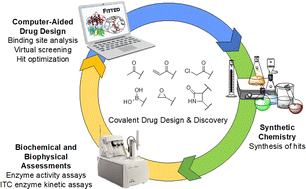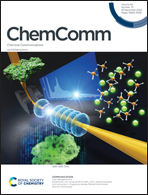Computational and biophysical methods for the discovery and optimization of covalent drugs
Abstract
Drugs that act by covalently attaching to their targets have been used to treat human diseases for over a hundred years. However, the deliberate design of covalent drugs was discouraged due to concerns of toxicity and off-target effects. Recent successes in covalent drug discovery have sparked fresh interest in this field. New screening and testing methods aimed at covalent inhibitors can play pivotal roles in facilitating the discovery process. This feature article focuses on computational and biophysical advances originating from our labs over the past decade and how these approaches have contributed to the design of prolyl oligopeptidase (POP) and SARS-CoV-2 3CLpro covalent inhibitors.



 Please wait while we load your content...
Please wait while we load your content...